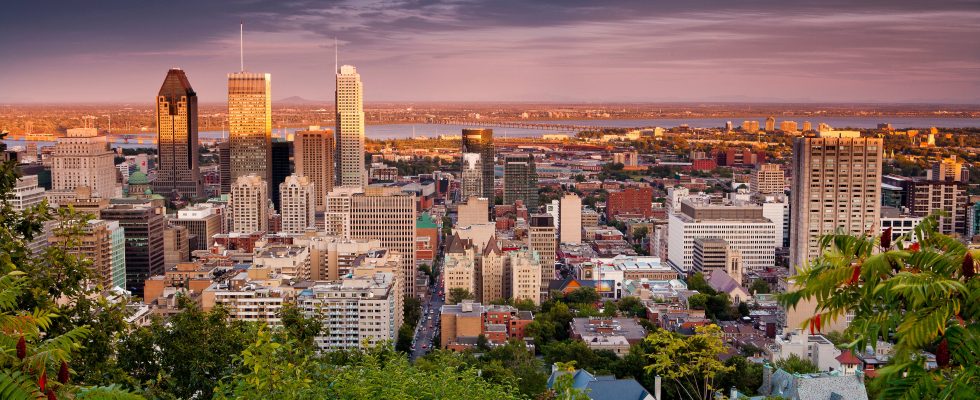In this part of the American continent, displaying more than 400 years of age is not insignificant. Québec, the only fortified city north of Mexico, is a historical pearl and an architectural gem. Its ramparts extend over more than four kilometers and still contain four doors full of the cachet of yesteryear. Respectable walls that protect the old town, listed as a UNESCO World Heritage Site, full of cobbled streets, stone houses and facades covered with huge frescoes relating to its social and cultural construction.
Below, the Petit Champlain district bears the name of the explorer-geographer who erected the first dwelling on the site of what is now Place Royale. From 1680, the aptly named Casse-cou staircase (398 steps!) replaced the steep path that linked it to the summit of Cap Diamant. Too touristy for the taste of the inhabitants, it is nevertheless worth a walk for its French-style architecture which contrasts with the neo-Renaissance style of the upper part: raised party walls as a firewall, projecting skylights, gable roofs… In the 1970s, it was threatened with destruction because it was too unsanitary. Fortunately, the businessman Gérard Paris and the architect Jacques de Blois decided to rehabilitate it. Today, it is largely managed by a cooperative which has made it a very lively place with many shops, galleries, restaurants and bars. In winter, they even serve hot beer! At the beginning of February, it hosts the famous carnival, the first edition of which dates back to 1894.
Quebec is home to many museums, including that of Civilization, which traces the lives of the first settlers. The latter being very religious, the town is also full of places of worship (more than eighty) including the famous Notre-Dame-des-Victoires church, the oldest solidly built in all of North America. A few steps away, the Anglican Cathedral of the Holy Trinity, with its neo-classical aesthetic, has occupied ghost hunters for a long time. He said to himself that the organ would play there alone and that the specter of a young woman would sometimes appear there…
Busy day and night
Contrary to the capital of New France, which fiercely defends its French roots, Montreal is cosmopolitan and bilingual. It knows how to juxtapose its lively little squares of old Europe with the large perpendicular avenues lined with skyscrapers. It has a multitude of districts: Chinese, Italian, Latin with its student campus, that of shows and its rue des Artistes, the meeting place for performers. Not forgetting the Village, a homosexual and festive district.
In effervescence day and night, the city serves as an artistic stage for all the festivals, from the circus to electronic music with, as a high point, the one devoted to jazz for forty-three years.
The Old Port is full of activities: pedalos, jet boat, bike, ice rink in the cold. The same goes for Mount Royal Park, designed by urban planner Frederick Law Olmsted, the creator of Central Park in New York. This vast hill was designed for running, horseback riding, rowing, cross-country skiing and impromptu picnics.
Much calmer, the bourgeois district of Outremont is distinguished by its manor-like residences and its tree-lined paths. Not far away, Mount Royal, nicknamed “the Garden City”, escapes the frenetic pace of the metropolis… and the curiosity of tourists.
70 kilometers away, the town of Saint-Zotique, a sort of Canadian Venice, deploys its twenty-five canals in the heart of the Notre-Dame-des-Rivières district. A small haven of peace among other wonders of the Belle Province.
